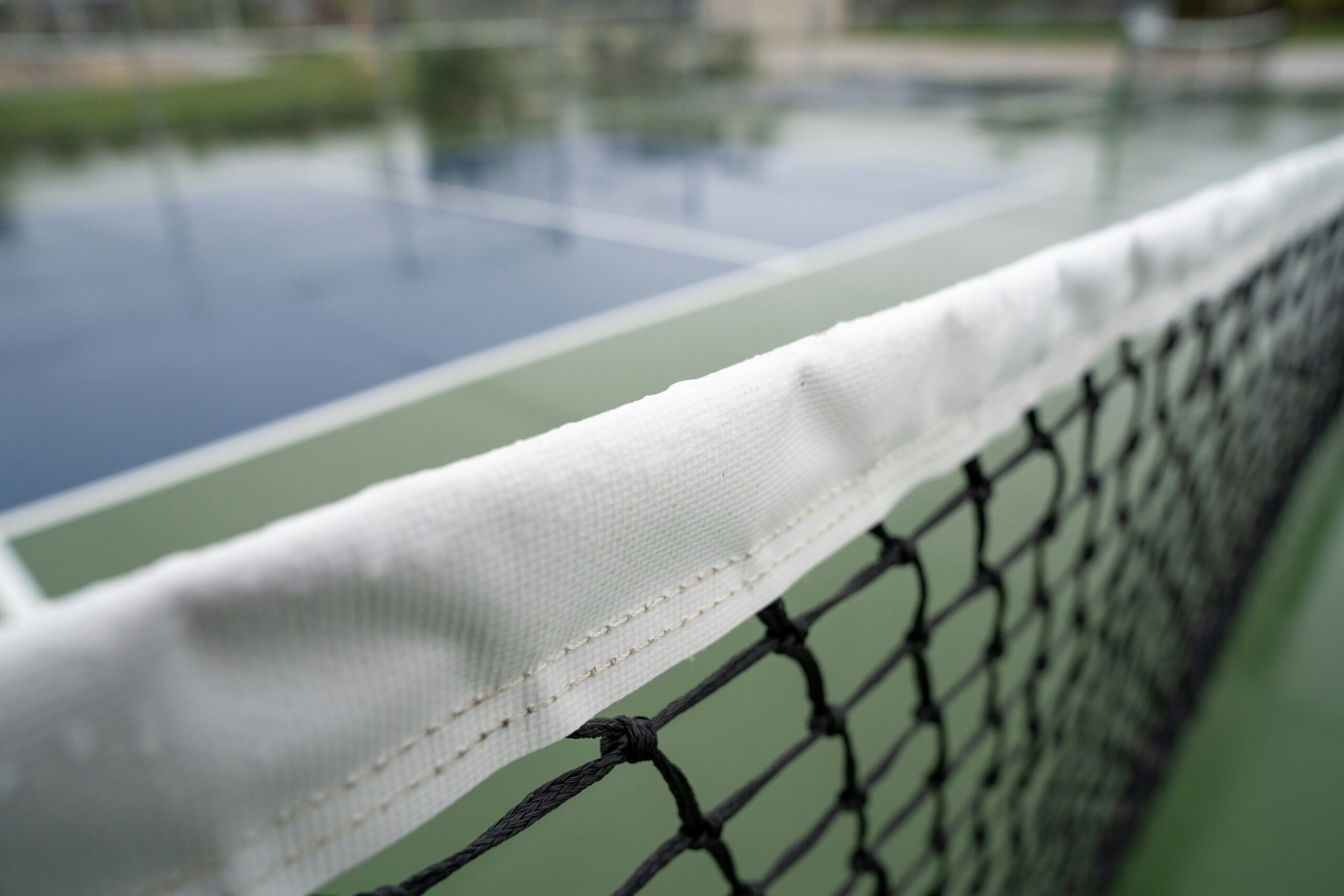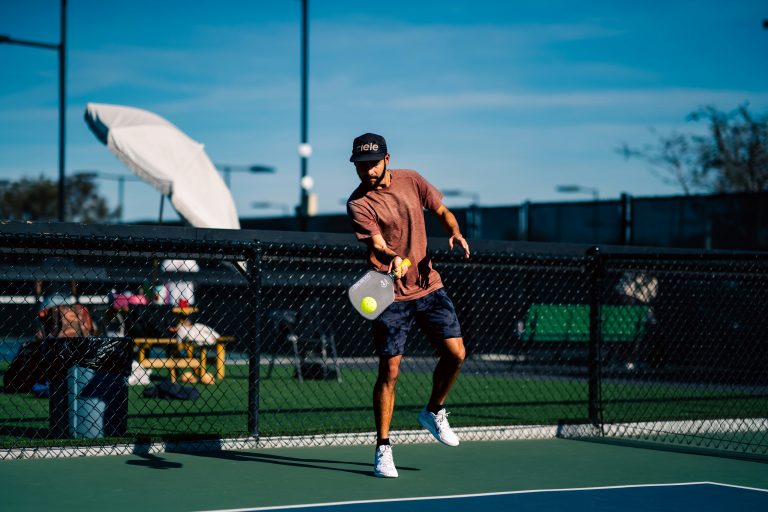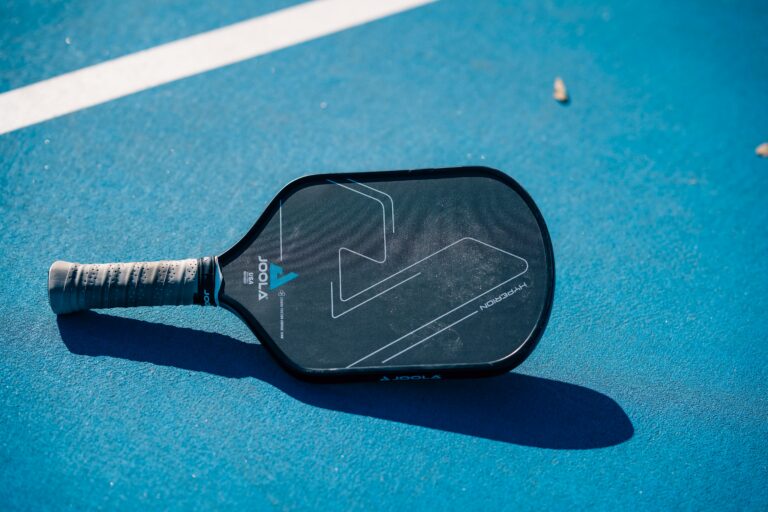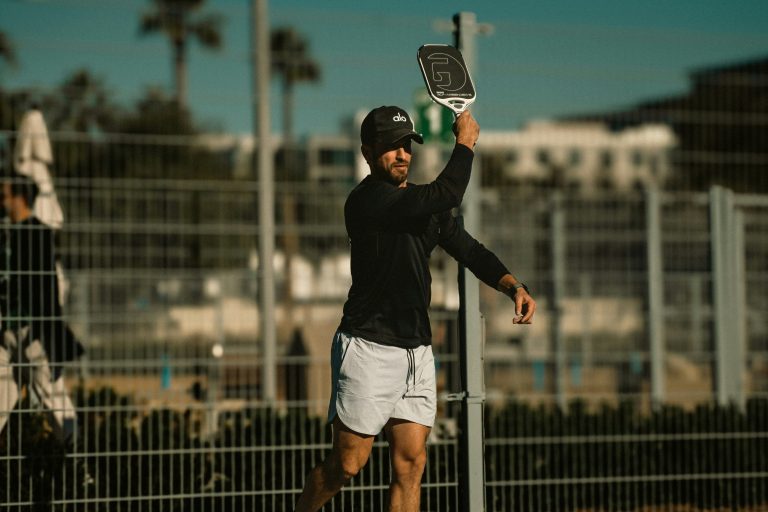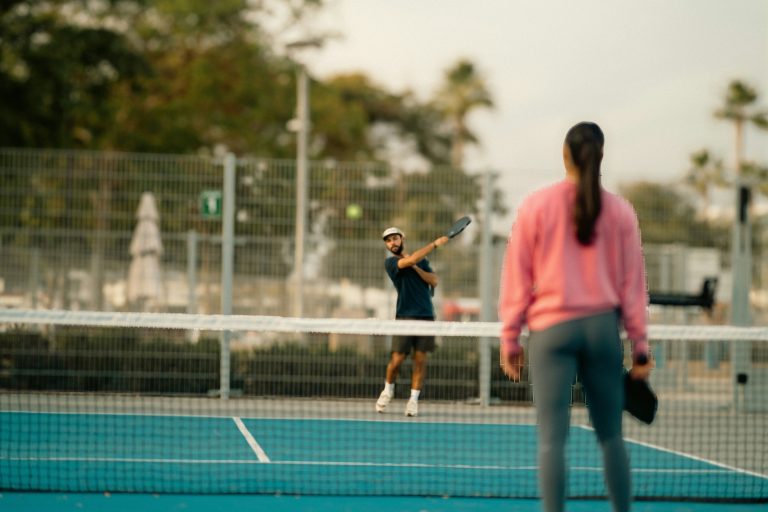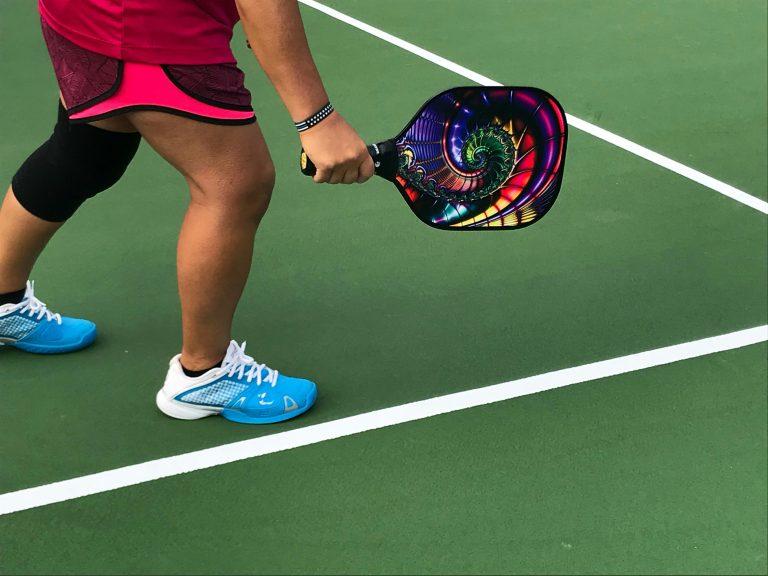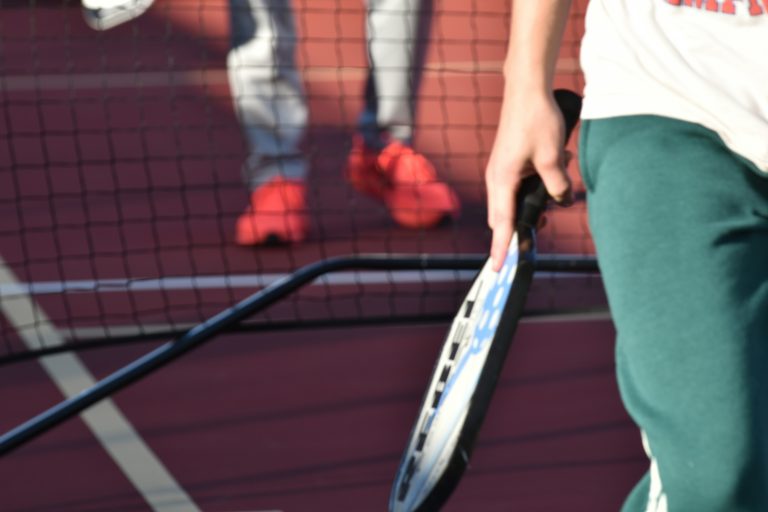Can You Play Pickleball in the Rain? Paddle Care Before & After Wet Play
Updated October 2025
The forecast looks sketchy, but you’re already dressed, stretched, and caffeinated. A few light drops start to fall. The courts are slick but not flooded. You ask yourself the eternal pickleball question; can you play pickleball in the rain?
Technically, yes. You can.
But should you? That’s where things get tricky.
Playing pickleball in the rain can be fun in a reckless, “we’ll dry later” kind of way, but it’s also one of the fastest ways to ruin your paddle, slip on the court, or shorten your gear’s lifespan. The key is understanding how moisture affects paddles, balls, and surfaces, and what you can do to protect everything before, during, and after a damp session.
The Real Risks of Playing in the Rain
Before you step onto a wet court, here’s what you’re actually up against:
- Slippery Footing: Outdoor courts get dangerously slick, especially if you’re playing on smooth acrylic or painted asphalt. Even light drizzle can make slides unpredictable.
- Warping & Delamination: Water seeping into the paddle’s edge or face can weaken adhesives and lead to delamination — a death sentence for most carbon or composite builds.
- Grip Failure: Wet grips lose friction fast. The paddle can twist mid-swing, changing your shot trajectory or even slipping out of your hand.
- Ball Deformation: Waterlogged balls feel heavier and lose bounce, which makes rallies sluggish and inconsistent.
- Mold & Odor: If you don’t dry your paddle properly, trapped moisture in the grip or edge guard can cause odor, mold, or hidden soft spots in the core.
So while you can technically play, the real question is whether the trade-offs are worth it.
Paddles and Rain: What Actually Happens
When water hits your paddle, it doesn’t just sit on the surface. It tries to find every opening — through micro gaps in the edge guard, tiny imperfections near the handle, or around foam walls in thermoformed paddles.
For Carbon Fiber Faces
Carbon fiber is durable but porous. If left wet, water can slowly seep toward the core, softening adhesives or creating separation between the surface and the honeycomb underneath. That’s how delamination starts.
For Fiberglass and Graphite Paddles
Fiberglass faces hold up slightly better in short bursts, but the coating can bubble or warp if soaked. Graphite paddles resist moisture the most, but their polymer cores still hate it.
For Thermoformed Builds
They’re marketed as “sealed,” but they’re not waterproof. Repeated wet exposure can weaken the bond between the foam injection and outer shell.
Smart Paddle Protection Before It Rains
If you’re determined to play, or live somewhere humid, it’s smart to get into preventive mode.
1. Keep a Paddle Cover Handy
A simple padded case like the Selkirk Premium Paddle Case or JOOLA Universal Paddle Cover can block water droplets and prevent grit from scratching the face.
2. Use a Quick-Dry Grip or Overwrap
Wet grips are a nightmare. Swap your stock grip for a Gamma Supreme Overgrip or Tourna Mega Tac — both are moisture-resistant and tacky even when damp.
3. Carry a Microfiber Towel
Keep a MagicFiber Microfiber Cloth or two in your bag to wipe the face between points. It keeps surface moisture from pooling and helps maintain consistent contact on shots.
4. Avoid Leaving Your Paddle in a Cold Car
Condensation and temperature swings can expand the paddle’s internal structure, trapping moisture that’s hard to dry out later.
5. Use Edge Tape or Guard Reinforcement
Adding edge guard tape (like Prolite Edge Tape Armor) can block direct water entry into the core. It’s cheap insurance.
During Play: Managing Moisture Mid-Match
If you’re already on court and the drizzle starts, here’s how to minimize the damage:
- Rotate Towels Between Games: Wipe your paddle face and grip frequently.
- Switch Balls Often: Wet pickleballs play heavy and don’t bounce true. Keep a few dry ones in your bag.
- Avoid Ground Hits: Smacking the ball off the wet ground splashes grit onto your paddle face — instant sandpaper effect.
- Shorten Your Swings: Wet conditions make timing tricky. Shorter strokes reduce slipping and over-rotation.
If visibility gets bad or footing feels unsafe, stop. It’s not worth an ankle sprain or a dead paddle.
After Playing in the Rain: Emergency Paddle Care
You made the call to play. It was fun. Now your paddle looks like it just survived a storm. Here’s how to rescue it before lasting damage sets in:
Step 1: Wipe Everything Immediately
Use a dry microfiber towel to remove surface water. Avoid rubbing aggressively — carbon grit can snag fibers.
Step 2: Air-Dry Vertically
Stand the paddle upright with the handle down, allowing water to drain away from the face. Never dry flat; trapped condensation under the face can warp it.
Step 3: Remove the Grip if It’s Damp
If you feel moisture under the wrap, uncoil it and replace it. Trapped humidity is a common cause of mildew and weight imbalance.
Step 4: Check for Warping or Soft Spots
Once dry, press gently on the face. If it feels mushy or uneven, the core may have absorbed water — a sign to monitor for delamination.
Step 5: Use a Paddle Cover or Case
Once fully dry, store it in a breathable paddle case. Avoid plastic bags, they trap humidity.
Cleaning a Raw Carbon Paddle After Rain
If your paddle face feels gritty or slick after playing in the rain, clean it gently:
- Mix a small amount of mild dish soap with warm water.
- Dip a microfiber cloth in the solution and wipe the face.
- Follow with a dry towel to absorb any leftover moisture.
Avoid alcohol wipes or abrasive sponges, they strip the raw carbon surface texture that creates spin.
Long-Term Effects of Repeated Wet Play
If you frequently play in damp conditions (like coastal or tropical climates), even light moisture adds up. Over months, the internal core can fatigue faster, adhesives weaken, and the paddle gradually loses pop.
Thermoformed paddles, despite their reputation for durability, are especially sensitive to temperature and moisture swings. That’s why delamination complaints spike after long humid summers.
You can mitigate this with consistent care and rotation — alternate between two paddles so each has time to dry completely.
Storage Tips for Rainy Seasons
- Keep paddles indoors, not in garages or trunks.
- Use silica gel packets in your paddle bag to absorb ambient moisture.
- Store vertically or hanging to allow air circulation.
- Avoid sealed bins unless they have moisture vents.
These simple habits extend paddle life dramatically, especially in wet climates.
When to Retire a Water-Damaged Paddle
Sometimes damage sneaks up slowly. Here’s when it’s time to say goodbye:
- A bubbling or raised spot appears under the face.
- The paddle sounds hollow or uneven.
- You notice inconsistent spin or power even after drying.
- The edge guard separates slightly from the body.
If any of these happen, the internal core has likely been compromised. You can still use it for casual play, but don’t expect consistent performance.
Product Picks for Wet Weather Paddle Care
| Product | What It Does | View on Amazon |
| MagicFiber Microfiber Cloths (3-Pack) | Wipes and dries face surfaces quickly | Check Price |
| Selkirk Premium Paddle Case | Protects against rain, sun, and dirt | Check Price |
| Gamma Supreme Overgrips | Adds tackiness when hands are sweaty or damp | Check Price |
| Prolite Edge Tape Armor | Reinforces paddle edge from moisture entry | Check Price |
| Silica Gel Packets | Keeps bags and gear dry between sessions | Check Price |
You can easily build a small “paddle survival kit” with these — toss them in your pickleball bag and you’ll always be ready for sudden weather swings.
Final Thoughts: Know When to Walk Away
There’s a time to grind and a time to call it. If puddles are forming or your shoes start sliding like ice skates, pack it in. The best players know when to protect their gear, and their ankles.
Your paddle can handle light drizzle once in a while, but it’s not meant to be a rain warrior. Clean it, dry it, and store it right, and it’ll reward you with consistent performance for years.
If you do get caught mid-match again, at least now you’ll know how to keep your gear alive long enough to hit the courts another day — under clear skies.
FAQ: Can You Play Pickleball In the Rain
Can you play pickleball in light rain?
Yes, but it’s risky. Slippery courts and wet paddles increase the chance of injury and gear damage.
Does rain permanently damage a paddle?
Not instantly, but repeated moisture exposure can cause delamination or warping over time.
What’s the safest way to dry a paddle?
Air-dry vertically in a warm, dry room. Never use hair dryers or heaters — they can soften adhesives.
Can I waterproof my paddle?
Not fully, but edge tape and covers help reduce exposure. Avoid sprays or sealants — they interfere with face texture.
Are outdoor balls waterproof?
They’re water resistant, but they absorb moisture after a few games. Always keep extras handy for rotation.
What happens if my grip gets soaked?
Remove it, let the handle dry, and replace it with a fresh overgrip. Mold grows fast in wet padding.
Does playing in humidity cause the same damage?
Humidity is milder but still wears on adhesives over time. Consistent drying and storage habits prevent issues.

